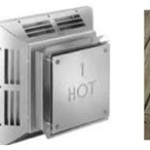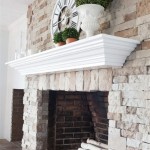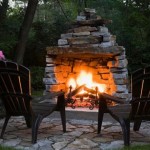Dimplex Electric Fireplace Efficiency: Understanding the Heat and Cost
Electric fireplaces have emerged as a popular alternative to traditional wood-burning or gas fireplaces, offering a combination of aesthetic appeal and practical heating solutions. Among the various brands available, Dimplex is a prominent name known for its innovative designs and purported energy efficiency. Understanding the efficiency of Dimplex electric fireplaces requires a detailed examination of their heating mechanisms, energy consumption, and factors that influence their overall cost-effectiveness.
Efficiency, in the context of electric fireplaces, encompasses several aspects. First, it refers to the ability of the fireplace to convert electrical energy into usable heat. Second, it considers the distribution of that heat within a room. Third, and perhaps most importantly for consumers, it involves the overall cost of operation in relation to the warmth provided. This article will explore these facets of Dimplex electric fireplace efficiency, offering an objective perspective on their performance.
Heating Technology and Energy Conversion
Dimplex electric fireplaces primarily utilize two types of heating technology: fan-forced heaters and infrared quartz heaters. Fan-forced heaters operate by drawing cool air into the unit, passing it over a heated element (typically a metal coil), and then circulating the warmed air into the room via a fan. Infrared quartz heaters, on the other hand, rely on quartz bulbs or elements that emit infrared radiation. This radiation directly heats objects and people in its path, rather than heating the air itself.
Both types of heating systems exhibit near 100% energy conversion efficiency. This means that virtually all the electrical energy consumed is transformed into heat. Unlike gas or wood fireplaces, which lose a significant portion of energy through the chimney or ventilation system, electric fireplaces do not require venting. Therefore, they retain all the generated heat within the room. However, this high conversion efficiency doesn't necessarily translate to lower operating costs. The cost-effectiveness depends on the amount of electricity consumed and the duration of operation.
Dimplex fireplaces often incorporate thermostats and adjustable heat settings to allow users to control the amount of heat produced. Lowering the heat setting reduces the power consumption, but also decreases the heating output. Conversely, setting the thermostat to a higher temperature increases power consumption to maintain the desired room temperature. The efficiency of the heating system is therefore tied to the user's heating preferences and how effectively they manage the thermostat settings.
Furthermore, the size of the room being heated significantly impacts the perceived efficiency. A smaller room will reach the desired temperature much faster and require less energy to maintain it compared to a larger room. Using a Dimplex fireplace in a space that exceeds its recommended heating capacity will result in the unit running constantly, consuming more electricity, and potentially failing to adequately heat the room.
Operational Costs and Electricity Consumption
The operational cost of a Dimplex electric fireplace is directly related to its electricity consumption. The power consumption is typically measured in watts or kilowatts (kW). Most Dimplex models are designed to operate on a standard 120-volt or 240-volt electrical circuit. The wattage rating indicates the amount of power the fireplace draws when operating at its maximum heat setting. To estimate the hourly operating cost, one can multiply the fireplace's wattage (in kW) by the local electricity rate (in dollars per kilowatt-hour). For example, if a fireplace consumes 1.5 kW and the electricity rate is $0.15 per kWh, the hourly operating cost would be $0.225.
However, the actual operating cost can vary depending on several factors. Thermostat settings, room insulation, and outside temperature all play a significant role. During colder periods, the fireplace will need to work harder to maintain the desired temperature, resulting in higher electricity consumption. Conversely, in warmer weather, the heating element may only activate intermittently, lowering the overall energy usage.
Dimplex fireplaces often include a flame-effect feature that operates independently of the heating element. This allows users to enjoy the visual appeal of a fire without generating heat, particularly during warmer months. The flame effect typically consumes a minimal amount of electricity, often less than 100 watts. Running the flame effect alone can provide ambiance without contributing significantly to the electricity bill.
Comparing the operational costs of electric fireplaces to those of other heating systems requires careful consideration. While electric fireplaces have near 100% conversion efficiency, electricity rates are often higher than natural gas or fuel oil prices. Therefore, the overall cost of heating a space with an electric fireplace may be comparable to or even higher than using a traditional furnace or gas fireplace, depending on local energy prices and usage patterns.
Factors Influencing Perceived Efficiency
Several factors beyond the inherent efficiency of the heating technology can significantly impact the perceived efficiency of a Dimplex electric fireplace. These factors relate to the user's experience, the installation environment, and the intended use of the fireplace.
Room Insulation and Heat Retention: The level of insulation in a room is crucial for maintaining a consistent temperature. Poorly insulated rooms lose heat rapidly, requiring the fireplace to work harder and consume more electricity to compensate. Improving insulation by sealing drafts, adding weather stripping, or upgrading windows can significantly reduce heat loss and improve the overall efficiency of the heating system.
Zonal Heating Applications: Dimplex electric fireplaces are often used for zonal heating, which involves heating only the occupied areas of a home, rather than the entire dwelling. This approach can be more energy-efficient than relying on a central heating system to warm every room, regardless of whether they are being used. By focusing heat on specific areas, such as a living room or bedroom, users can reduce their overall energy consumption and heating costs.
Supplemental Heat Source: Electric fireplaces are frequently used as supplemental heat sources, complementing a central heating system. During milder weather, they can provide sufficient warmth to take the edge off the chill without requiring the central heating system to activate. This can result in significant energy savings, particularly during shoulder seasons when full-house heating is not necessary.
Maintenance and Longevity: Regular maintenance can also contribute to the perceived efficiency of a Dimplex electric fireplace. Cleaning the heating element and fan (if applicable) can ensure optimal airflow and heat distribution. Over time, dust and debris can accumulate, reducing the efficiency of the heating system and potentially leading to overheating or component failure. Proper maintenance can extend the lifespan of the fireplace and maintain its performance, ultimately contributing to its long-term cost-effectiveness.
User Expectations and Perceived Value: The perceived efficiency of a Dimplex electric fireplace is also influenced by user expectations and the perceived value of the product. If a user expects the fireplace to heat a large, poorly insulated room quickly and efficiently, they may be disappointed with its performance. Conversely, if a user understands the limitations of the fireplace and uses it appropriately for zonal heating or supplemental warmth, they may be more satisfied with its efficiency.
In summary, the efficiency of a Dimplex electric fireplace is a multifaceted concept that encompasses energy conversion, operational costs, and user-related factors. While the heating technology itself is highly efficient in converting electricity into heat, the overall cost-effectiveness depends on a variety of factors, including electricity rates, thermostat settings, room insulation, and usage patterns. Understanding these factors is crucial for maximizing the efficiency and minimizing the operating costs of a Dimplex electric fireplace.

Electric Fires By House Of Stoves
Electric Fireplace Heating Solutions Dimplex

Satisfying Dimplex Mozart Stone Effect Optiflame Electric Great Er

Dimplex Nova 26 In Multi Fire Xhd Electric Fireplace Insert Fireplaces Direct

Dimplex Traditional Revillusion Weathered Concrete Built In Electric F Fireplaces By Cameron

Dimplex Bf45dxp Deluxe Built In Electric Fireplace 45 Inch

Inset Fires Dimplexfires

Dimplex 23 Inch Electric Fireplace Insert Deluxe Dfi2310 Hvacdirect Com

Dimplex Avalone Concrete Eco Led Free Standing Electric Fireplace Good To Buy Fireplaces With Mantel In An Apartment House And Any Room At A

Dimplex Alameda Optimyst Electric Fireplace Suite Flames Co
Related Posts








